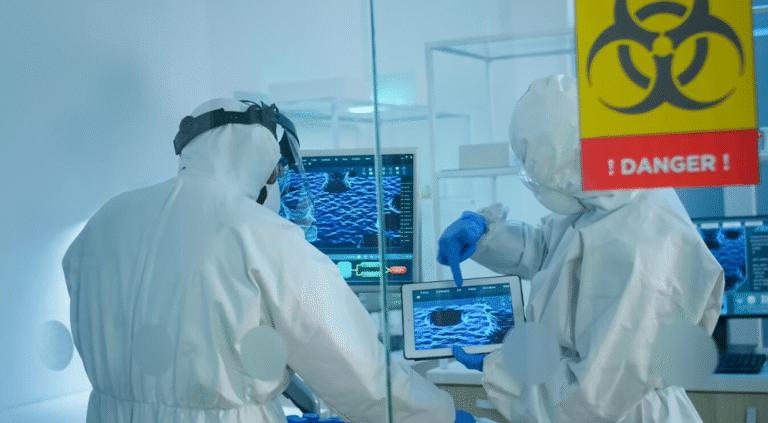Industrial radiography is a critical non-destructive testing method that plays a key role in modern industry. From detecting flaws in pipelines and aircraft components to verifying weld integrity in construction and manufacturing, industrial radiography allows technicians to inspect materials without causing damage. The importance of irrsp practice test and we’ll also explore the role of radiographers, safety protocols, and how aspiring professionals can prepare effectively.
What Is Industrial Radiography?
Industrial radiography uses high-energy radiation (X-rays or gamma rays) to examine the internal structure of materials. The process is non-invasive and widely used to detect internal defects, such as cracks, voids, or inclusions, in metal components and structures. Radiographic testing can be conducted using:
- X-ray machines – Commonly used in laboratories and static settings
- Gamma-ray sources – Typically used in fieldwork due to portability
This method is invaluable across industries such as aerospace, construction, oil and gas, manufacturing, and power generation.
Roles and Responsibilities of Industrial Radiographers
Industrial radiographers are trained professionals responsible for performing radiographic tests safely and effectively. Their duties include:
- Setting up and calibrating radiographic equipment
- Following strict safety procedures to limit radiation exposure
- Capturing images for analysis
- Interpreting radiographs to identify flaws or anomalies
- Ensuring compliance with federal and state regulations
In the United States, radiographers must comply with standards set by agencies like the Nuclear Regulatory Commission (NRC) and the Occupational Safety and Health Administration (OSHA).
The Importance of Radiation Safety
Radiation is both a powerful tool and a significant hazard. Improper handling can lead to serious health consequences, including radiation sickness and long-term cancer risks. Therefore, radiation safety is a core component of industrial radiography.
Key radiation safety practices include:
- Using shielding materials (e.g., lead, concrete)
- Maintaining safe distances from the radiation source
- Wearing dosimeters to monitor exposure
- Following the ALARA principle (As Low As Reasonably Achievable)
- Understanding emergency procedures in case of accidental exposure
Safety is not just a personal responsibility but a legal requirement. Employers must provide training, protective gear, and maintain exposure records for their staff.
Why the IRRSP Practice Test Matters
Studying for the IRRSP exam requires more than reading manuals or attending classes. Practice tests are a critical preparation tool for the following reasons:
1. Understanding the Exam Format
Practice tests help candidates become familiar with the structure of the IRRSP exam. Knowing what to expect reduces anxiety and improves time management on exam day.
2. Reinforcing Core Concepts
Repetition and review are essential to retaining knowledge. Practice tests reinforce key topics, such as:
- Radiation physics
- Shielding calculations
- Regulatory requirements
- Emergency procedures
3. Identifying Weak Areas
Mock exams highlight gaps in understanding. By tracking performance on specific topics, candidates can focus their study efforts where they’re needed most.
4. Boosting Confidence
Taking multiple practice tests helps build test-taking confidence. Familiarity breeds comfort, which is essential when answering high-stakes questions under time pressure.
5. Minimizing Risk of Failure
The IRRSP certification is vital for career advancement. Failing the exam can delay employment or promotion opportunities. Practice tests reduce this risk by increasing readiness.
Career Opportunities with IRRSP Certification
Earning your IRRSP certification opens up numerous opportunities in industries that rely heavily on NDT services. Certified radiographers can work in:
- Aerospace manufacturing and maintenance
- Oil and gas exploration and pipelines
- Nuclear and power generation plants
- Transportation infrastructure (e.g., bridges, railways)
In addition to fieldwork, certified professionals may advance to supervisory, safety officer, or inspection coordinator roles.
Regulations and Compliance
Radiographers must comply with federal, state, and industry-specific regulations. The IRRSP certification exam ensures you’re knowledgeable in:
- NRC rules and licensing
- State-specific radiography laws
- Radiation exposure limits and monitoring
- Equipment handling and storage guidelines
Failing to follow these regulations can result in fines, job loss, or serious safety incidents.
Challenges in Industrial Radiography
Despite its benefits, industrial radiography is not without challenges:
- Safety Risks: Exposure to radiation must be meticulously controlled.
- Remote Work: Many jobs are conducted in remote or hazardous environments.
- Technical Complexity: Equipment setup and image interpretation require skill and precision.
- Regulatory Pressure: Staying up to date with laws and maintaining records can be demanding.
Certification and practice testing help prepare candidates for these real-world conditions.
The Evolving Role of Technology in Radiography
The field of industrial radiography is evolving with the advent of digital imaging and automated systems. Modern radiographers must be adept with:
- Digital Radiography (DR) and Computed Radiography (CR) systems
- Software for image analysis and defect recognition
- Remote radiographic units that minimize operator exposure
As technology advances, staying certified and continually learning becomes even more important.
Conclusion: Excellence Through Preparation
Industrial radiography is a highly specialized, safety-sensitive profession that demands thorough training and certification. Whether you’re just starting your career or seeking advancement, earning your IRRSP certification is a crucial milestone.
Practice tests are an indispensable part of your preparation. They help you identify weaknesses, reinforce knowledge, and build the confidence needed to succeed. More than just a study aid, IRRSP practice tests are a roadmap to mastery, professionalism, and safety.

